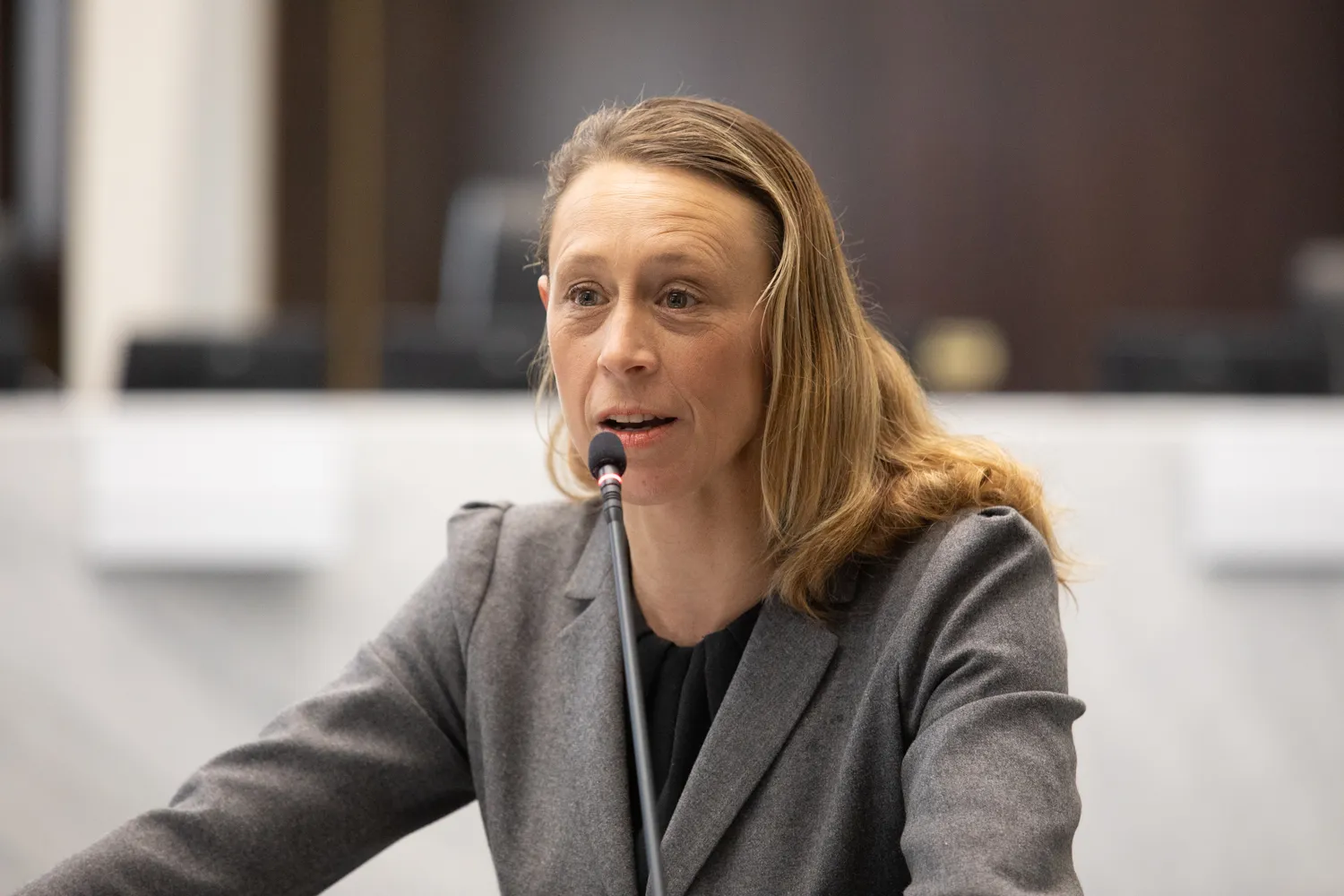Photo Courtesy: inewsource
San Diego County Supervisor Terra Lawson-Remer recently used a clever stunt to show her progressive supporters that she is in their corner. For the rest of us, meh.
At the July Board of Supervisors meeting Lawson-Remer advanced a resolution entitled “Fighting Back Against Corporate Homebuyers and Wall Street Landlords”. It was a “study the issue” motion, nothing real.
The day before that meeting she joined a demonstration against Blackstone, a large investment firm with sizable real estate holdings.
The event was held in front of a Blackstone-owned apartment building in Pacific Beach and featured Terra in a chartreuse-colored jump suit, bull horn in hand, accompanied by social justice allies from SEIU and the ACCE Institute.
Political theater – not up to AOC’s standards perhaps but a clever prelude to her Board of Supervisors move.
Perhaps too clever. Terra’s stunt could backfire. A closer examination of this issue should lead her District 3 voters to recognize that she isn’t being straight with them on housing policy.
Yes, high housing costs are troublesome, the biggest factor in the post-pandemic inflation surge. If one doesn’t own a house that’s a problem. But a solid majority of county residents live in owner-occupied housing – they benefit from rising prices.
Moreover, the geography of Terra’s 3rd Supervisorial District skews more suburban, with 65-70% home ownership in the affluent coastal North of her district.
Another problem for Terra is that observers who delve into the topic will discover that she plays fast and loose with the facts. An example would be her misleading conflation of investor ownership of single-family homes with that of multi-family buildings.
She attacked Blackstone as “the largest residential landlord in the U.S., with an estimated 300,000 rental units in their portfolio”.
Seems like a lot until one recognizes the country has something like 128 million households – 300,000 units is about 0.23 % of the total. Similarly, she decried Blackstone’s purchase of 66 properties containing 5,600 units in San Diego, an insignificant portion of the county’s 1.5 million households. Do the arithmetic on that and you’ll see that’s about 85 units per property – they’re apartment buildings.
Lawson-Remer also neglected to mention that Blackstone paid more than $1 billion for those properties. The seller was the Conrad Prebys Foundation, benefactor to many progressive causes.
According to Molly Kirkland of the Southern California Rental Housing Association the portfolio of properties was old and in need of improvement, which Blackstone has the resources to accomplish. The deal was clearly not a mom-and-pop opportunity.
But it serves Lawson-Remer to demonize the large investors whom we depend on to finance big projects.
As for the theory that big investors are driving up the cost of single-family homes, it’s not supported by the data – Terra misleads voters with her claim that “institutional investors” and “hedge funds” are competing with first-time homebuyers. According to real estate analytics firm Parcl Labs, institutional operators own around 0.73% of the total U.S. single-family housing stock (less than one in 100 homes).
And in the past two years (2022-23) only two units were bought by large investors in the entire state of California, says Melanie Woods of the California Apartment Association.
The broad term “investor” includes any purchaser who is not a natural person. According to a source cited in Lawson-Remer’s memo to the Board of Supervisors (CoreLogic), investor purchases of single-family homes have been trending downward since mid-2021, yet home prices have continued to advance. And most landlords are still small operators with between one and 10 homes.
The big picture is that San Diego County suffers from a lack of new housing, in part because development at the periphery of the metro area is restricted. As Supervisor Joel Anderson pointed out there has been essentially no new housing construction in the county in the past three years. Couple that fact with the low mortgage rates that prevailed for so long and San Diego home prices naturally went through the roof.
Lawson-Remer’s attack on Blackstone etc. serves two purposes.
It reinforces her standing with the progressive-activist community she relies on to get elected, and it deflects attention away from her majority’s responsibility for the lack of supply.
Anderson said it well when he declined to support Lawson-Remer’s measure: “In my district we need more housing…Without large corporations… none of these projects will be built. If we’re going to say that mom-and-pops are the only ones who can build homes for potential rentals, we’re killing the market and we’re hurting the people that we say we serve.”
A version of this column appeared in The Coast News.




